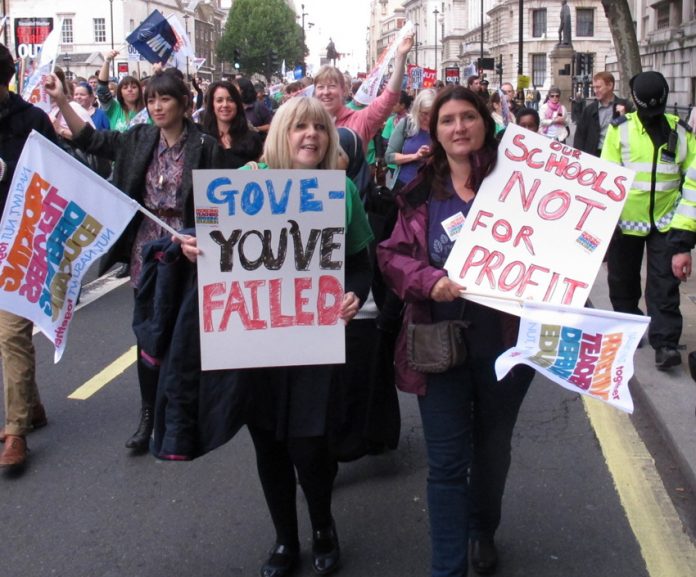
OVER half of all teachers have seriously considered leaving the profession in the last twelve months, a survey carried out for teaching union NASUWT has shown.
OVER half of all teachers have seriously considered leaving the profession in the last twelve months, a survey carried out for teaching union NASUWT has shown.
NASUWT said: ‘The overwhelming majority of teachers love working with children, but around half say that they are dissatisfied with their job, mainly because of excessive workload.
‘A survey of teachers’ levels of job satisfaction and wellbeing, carried out by independent polling company ComRes, validates research undertaken by the NASUWT which suggests that the teaching profession is on the verge of a crisis.’
The survey found that:
• Over half of teachers (52%) say that they have seriously considered leaving their current job in the last 12 months and nearly half (47%) have seriously considered leaving the profession;
• Two-fifths of teachers (41%) say their job satisfaction has decreased in the last 12 months;
• Teachers’ biggest concern regarding their job is workload (79%), followed by pay and pensions (66%), changes or reforms in the curriculum (59%) and school inspections (51%). The vast majority of teachers (86%) say that their workload has increased in the last 12 months.
Chris Keates, General Secretary of the NASUWT, said: ‘The Secretary of State’s claims that teachers are the happiest of all professions or that the teaching profession support the Coalition government’s reforms have been exposed as false.
‘Instead of trivialising teachers’ concerns, it is time that the Coalition government engaged in serious and genuine dialogue with the NASUWT before irreparable damage is done to the teaching profession, with the consequent adverse impact upon children and young people and the education system.’